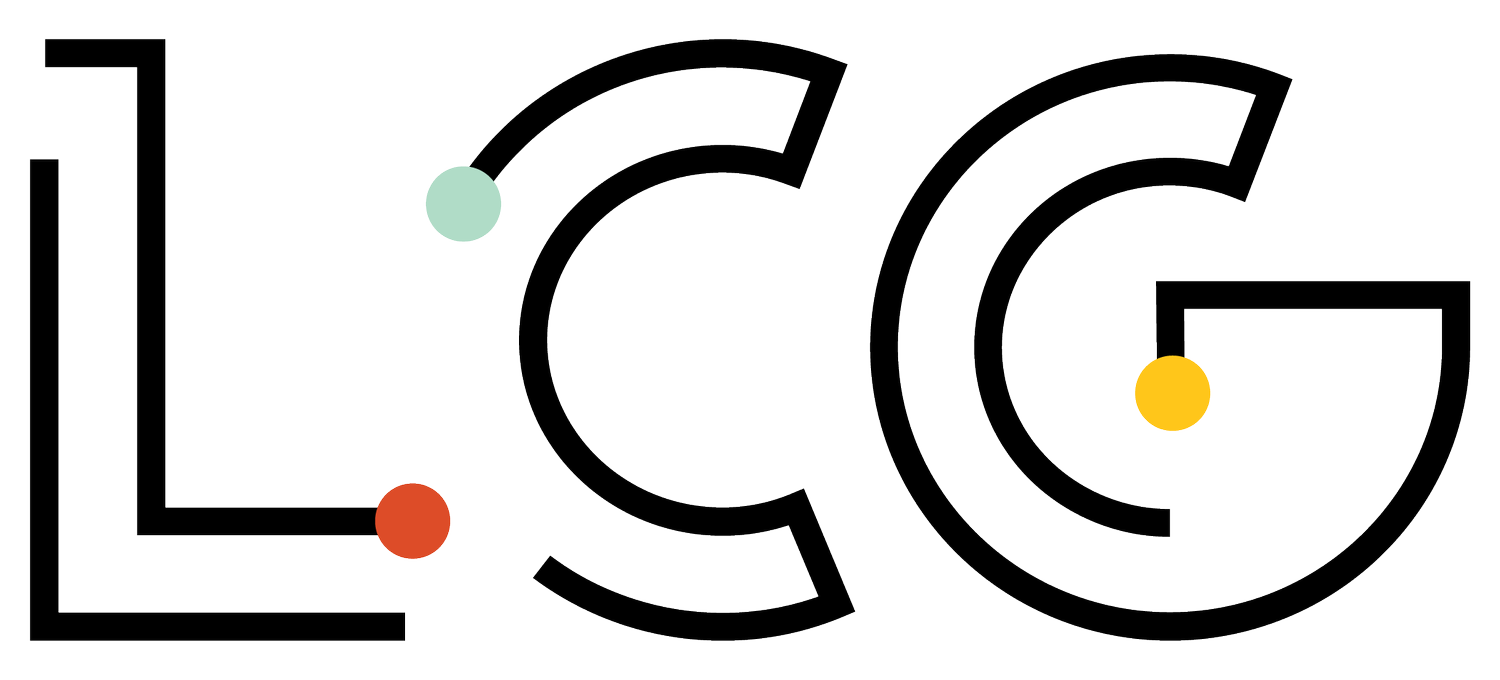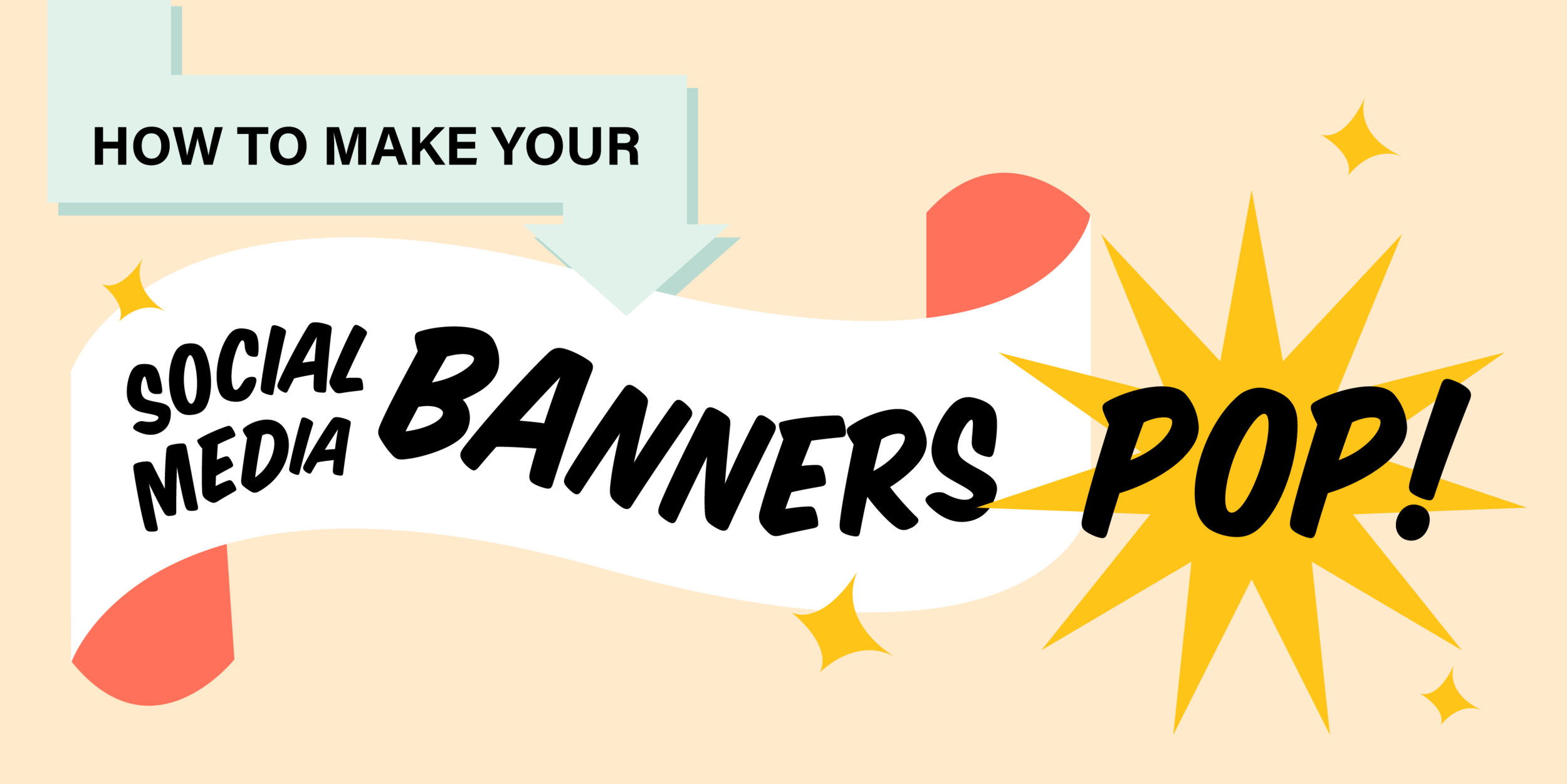First, let’s be clear: We’re not saying your social media banners should be that annoying jazz-hands type of pop, but they should be unique to your brand and ideally turn a head or two to help you stand out from the crowd. You should make your banners captivating, exciting, and tell a story -- all in a simple, mobile-friendly way. Easy, right? Ha! Well, it’s no surprise that most brands fall short in doing this. We believe that simplicity is key. Since it is easy to overcomplicate so many things and think “more is better” instead of “better is better than more,” we have crafted some do’s and don'ts to help your channel banners hit home.
Don’ts:
 Don't include your logo
Don't include your logo
You may be thinking that you need it but in most cases, it looks out of place, can make the banner look awkward, ends up getting cropped out in mobile, or is too small to be read. Your logo is in your profile image, so you probably don’t need it in your banner .
 Don't add a lot of text
Don't add a lot of text
Think mobile friendly and simple. Nobody’s going to be able to read that tiny print on their phones. Resist this urge!
 Don’t change banners too frequently
Don’t change banners too frequently
It’s ok to make your social media channel banners seasonal and timely if you want, but don’t overdo it. The majority of your audience doesn’t see it regularly, so changing it has diminishing ROI. If someone pushes back on you with this, tell them that there is no way for people to click on banners to get to your website and the vast majority of social media interaction happens on the newsfeed and NOT on the profile page.
 Don't be redundant
Don't be redundant
Did you put your brand’s tagline in your header, your name, your description, and your pinned tweet? All of these profile elements should complement each other well, while avoiding redundancy.
 Don’t be a victim of the crop
Don’t be a victim of the crop
Banner images usually have the profile image that cuts into or covers part of them. Make sure you plan for that and ask yourself what the profile image is hiding. Don’t forget that we live in a multi-device world, so the only way to truly make sure your image is not being cropped in awkward ways is to look at it from a variety of devices. Happy testing!
 Don’t use branding that attracts children (if you’re talking to parents or teachers)
Don’t use branding that attracts children (if you’re talking to parents or teachers)
Many brands, especially education brands that target earlier grade levels, rely upon their kid-oriented visuals. This would be ok if they were talking to children, but more often than not, they’re trying to get the attention of parents and teachers. Adults don’t tend to like being talked to like a child, so make sure you are talking to your buyers in a way that makes sense.
Do’s :
 Make it as simple as possible
Make it as simple as possible
By now, we’ve talked about this ad nauseum, but remember that less is more, especially in this fast-paced, mobile-friendly world.
 Consider showing your audience or your product in action (Think: impact!)
Consider showing your audience or your product in action (Think: impact!)
What’s the story you want to tell? Is it about how when students or teachers use your product, they light up with excitement? Show off the impact of your brand and figure out how to creatively show your product in action.
 Ensure your audience is represented visually
Ensure your audience is represented visually
It’s important that your audience is represented visually in anything you create. If they don’t see people that look like them, they won’t feel welcome and may not think that your brand is for them.
 Use video if the channel accepts them
Use video if the channel accepts them
Video is an excellent way to make your brand come to life! Although you can just do this on Facebook right now, if you have a video, make sure you take advantage of this. Check out how Edutopia does this for some inspiration.
 Highlight what your audience likes to do with your brand on that channel
Highlight what your audience likes to do with your brand on that channel
This is your chance to make your brand shine. While you want to stick within your overall brand style guidelines, you should also explore the unique aspects of each social channel. What does your audience typically do with your product? Where do they use it? Paint a fun, unique picture for your audience to get them excited about your product AND demystify the experience.
 Get creative
Get creative
Go bold and think up creative ways that your banner can interact with your profile. Some brands have gotten clever and have used their banners to play off of their profile icon. Imagine children pointing to your logo or your logo captivating the people in your banner. If you have a product that students use, consider highlighting some of their best work. Here’s an example of student work from Desmos that is inspiring!
One more thing: You might also want to take a peek at this Pinterest board we are using to curate examples of EdTech brands’ Twitter channel banners. We’ll be adding to this frequently and incorporating Facebook, Instagram, YouTube, and more.
Did we miss anything? Have any do’s or don’ts you’d like to share? Comment below or reach out to us on Twitter.


